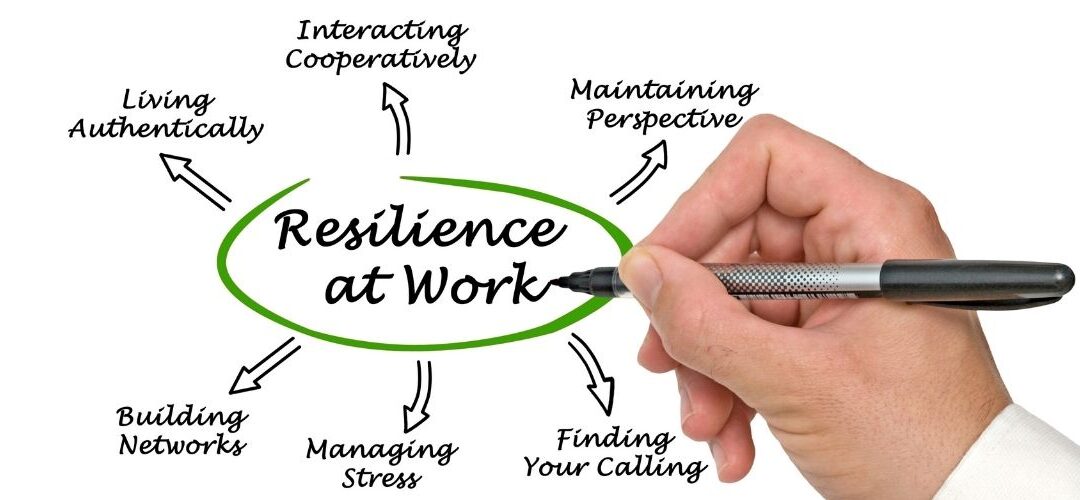Are you feeling overwhelmed at work? You’re not alone.
Corporate stress is more common than ever, and it can take a serious toll on your health and productivity. But there’s good news: stress management training can help you regain control. Imagine walking into the office feeling calm and focused, ready to tackle any challenge.
This is not just a dream—it’s a reality that many have achieved through targeted training. By investing a small amount of your time now, you can unlock a more balanced and successful work life. Curious about how this works? Keep reading to discover how corporate stress management training can transform your professional experience and empower you to thrive.

Importance Of Corporate Stress Management
In today’s fast-paced work environment, stress is a common challenge. Corporate stress management training is vital for maintaining a healthy workplace. It equips employees with tools to handle stress effectively. This leads to improved mental health and productivity.
Impact On Employee Well-being
Stress affects employee health negatively. It can lead to burnout and decreased motivation. Employees under stress may experience anxiety and depression. These issues impact their personal and professional lives. A stress management program teaches coping strategies. Employees learn to balance work pressures with personal needs. This boosts their morale and job satisfaction.
Benefits For Company Performance
Corporate stress management benefits the company’s overall performance. Reduced stress leads to higher productivity levels. Employees can focus better and work efficiently. This enhances team collaboration and innovation. A stress-free environment also reduces absenteeism. Happy employees are less likely to take sick days. This results in lower healthcare costs for the company. Investing in stress management improves employee retention. Talented employees stay longer, reducing turnover rates.

Identifying Stress Triggers In The Workplace
Stress is an invisible enemy in the workplace, lurking in the shadows of tight deadlines, demanding bosses, and the constant pressure to perform. Identifying stress triggers is essential in managing workplace stress effectively. Discover how pinpointing these triggers can pave the way for healthier and more productive work environments.
Common Causes Of Stress
Stress in the workplace often stems from a variety of sources. Overwhelming workloads can make you feel like you’re drowning in tasks. An unsupportive boss might leave you second-guessing your every move, creating a tense atmosphere.
Conflicts with colleagues or lack of recognition can also contribute to stress levels. Imagine working hard on a project only for it to go unnoticed. These common causes, if left unaddressed, can lead to burnout and decreased productivity.
Recognizing Signs Of Stress
Being aware of stress signs is the first step toward managing them. Do you find yourself frequently fatigued or irritable after work? These can be telltale signs that stress is affecting your well-being.
Stress might also manifest physically through headaches or stomach issues. Pay attention to changes in your sleep patterns or appetite. Understanding these signs can help you take proactive steps towards stress management.
Consider keeping a stress diary to track when and why you feel stressed. It can offer surprising insights into your stress triggers. Are there specific tasks or people that consistently cause anxiety? Identifying these can help you navigate stressful situations more effectively.
How do you plan to tackle stress in your workplace? Taking time to identify and address your stress triggers could be the key to a healthier work life.
Effective Stress Management Techniques
Corporate stress management training offers valuable techniques to handle workplace stress. Stress affects productivity and mental health. Learning effective ways to manage it is crucial. This section explores practical methods for stress relief. Incorporating these techniques can enhance well-being and focus.
Mindfulness And Meditation
Mindfulness helps calm the mind. It involves being present in the moment. Focus on your breath. Notice your surroundings. Meditation complements mindfulness. It teaches relaxation and awareness. Regular practice reduces stress. Set aside a few minutes daily. Find a quiet space. Close your eyes and breathe deeply. Let thoughts pass without judgment. Feel the tension melt away.
Physical Exercise And Relaxation
Exercise boosts mood and energy. Even a short walk can help. Physical activity reduces stress hormones. It enhances mental clarity. Regular workouts improve resilience. Relaxation techniques support physical activities. Try deep breathing or progressive muscle relaxation. These methods calm the body and mind. They promote peace and reduce anxiety. Feel refreshed and ready for challenges.
Designing A Comprehensive Training Program
Creating a corporate stress management training program helps employees handle stress better. It focuses on practical techniques and real-life scenarios. This program aims to improve well-being and boost productivity at work.
Designing a comprehensive corporate stress management training program is crucial in today’s fast-paced work environment. You want your team to thrive, not just survive. A well-thought-out program can be the difference between a stressed-out workforce and a motivated, productive team. Creating an effective training program involves understanding what elements contribute to its success. It’s not just about throwing together a few relaxation techniques.
Elements Of A Successful Program
A successful program includes several key elements. Start with awareness sessions to help employees recognize signs of stress in themselves and others. This awareness can be eye-opening and is often the first step toward change. Incorporate stress-reduction techniques like mindfulness exercises, breathing techniques, and physical activities. These tools should be easy to practice both at work and home. Picture an employee taking a short walk or practicing deep breathing before a meeting. It can make a significant difference in their stress levels. Include support systems such as peer groups or access to counseling services. Having a support network can greatly enhance an individual’s ability to manage stress. Think about a time when you leaned on a friend during a tough period. That support likely made the situation more manageable.
Customizing For Different Roles
Customizing the program for different roles within your organization is essential. Not every employee faces the same stressors. For example, a customer service representative might deal with high-pressure situations differently than someone in IT. Tailor the training materials to address specific challenges faced by each role. This could mean more communication strategies for sales teams or more time management skills for project managers. By doing so, you ensure that each employee receives relevant and practical advice. Ask yourself: What unique pressures do different teams face? By understanding these, you can design a program that is not just comprehensive but also highly relevant. Remember, the goal is to equip everyone with the tools they need to manage stress effectively, regardless of their position. A one-size-fits-all approach rarely works. Tailoring your program shows that you value each individual’s experience and want to support them fully.
Implementing Stress Management Training
Implementing stress management training can transform workplace culture. It helps employees handle daily pressures better. This training equips teams with skills to manage stress effectively. Organizations can see improved productivity and reduced absenteeism. A structured approach ensures all employees benefit from this initiative.
Engaging Employees In Training
Engaging employees is crucial for stress management success. Use interactive activities to maintain interest. Encourage participation through discussions and role-playing. This makes learning more relatable and impactful. Offer flexible schedules to accommodate busy lives. Personalize sessions to address specific stressors in your workplace.
Creating A Supportive Environment
A supportive environment enhances training outcomes. Encourage open communication among team members. Promote a culture where seeking help is normal. Provide resources like counseling and wellness programs. Managers should lead by example in stress management. Recognize and reward efforts to reduce stress at work.

Measuring The Impact Of Stress Management
Stress is an inevitable part of corporate life. With deadlines, meetings, and constant demands, it’s easy to see why many employees feel overwhelmed. Corporate stress management training aims to alleviate these pressures, but how can you measure its impact? Let’s dive into the specifics.
Evaluating Employee Productivity
Employee productivity is a key indicator of the success of stress management training. When stress levels decrease, you should notice a boost in efficiency and output.
Use simple metrics like task completion rates and quality of work to assess changes. Are employees finishing their tasks faster or producing higher quality results?
Consider incorporating regular feedback sessions. These can provide insights into how employees feel and how stress management techniques are affecting their productivity.
Assessing Long-term Benefits
Immediate changes are great, but what about the long-term benefits? Stress management training should ideally result in sustained improvements.
Track metrics over several months. Look for consistent productivity improvements and reduced absenteeism as signs that the training is effective.
Reflect on your personal experiences—have you noticed a change in workplace morale or team dynamics? These subtle shifts can indicate the training’s lasting impact.
Ask yourself: Do employees seem more engaged and motivated over time? If they do, you’re likely witnessing the long-term benefits of stress management training.
Leveraging Technology For Stress Management
In today’s fast-paced corporate world, stress can feel like an unwelcome companion. However, technology offers promising solutions to manage and reduce stress effectively. By leveraging digital tools, companies can create a healthier work environment for their employees. Let’s explore how you can harness technology to alleviate stress in your workplace.
Apps And Tools For Stress Reduction
Imagine having a personal stress coach right in your pocket. Stress management apps provide guided meditation, breathing exercises, and relaxation techniques at your fingertips. Apps like Headspace and Calm offer daily reminders to pause and breathe, helping you stay grounded throughout the workday. Using these tools can foster a culture of mindfulness in your office.
Beyond apps, wearable technology like smartwatches can track your stress levels. They monitor your heart rate and alert you when it’s time to take a break. These devices help you identify stress patterns and manage them effectively. Have you considered how these tools could transform your stress management routine?
Online Training Modules
Online training modules offer flexible learning opportunities for stress management. Employees can access courses on stress reduction techniques from anywhere, at any time. Platforms like Udemy and Coursera provide comprehensive courses that cover everything from time management to emotional resilience.
Interactive modules with quizzes and real-life scenarios make learning engaging. They allow employees to apply stress management techniques in practical situations. How could online training empower your team to handle stress more effectively?
Additionally, webinars and virtual workshops connect employees with stress management experts. These sessions provide insights into the latest strategies for coping with stress. Are you ready to embrace technology to create a more balanced and productive workplace?
Frequently Asked Questions
What Is Corporate Stress Management Training?
Corporate stress management training equips employees with skills to handle stress effectively. It focuses on identifying stressors and adopting coping strategies. This training enhances productivity and well-being by promoting relaxation techniques, time management, and mindfulness. Companies benefit from reduced absenteeism, improved morale, and a healthier work environment.
Why Is Stress Management Important At Work?
Stress management is crucial for maintaining a productive work environment. High stress levels can lead to burnout, reduced efficiency, and higher turnover. Effective stress management improves focus, motivation, and job satisfaction. It fosters a positive workplace culture, promoting teamwork and innovation.
Employees feel valued and supported, enhancing overall organizational success.
How Does Stress Affect Employee Performance?
Stress negatively impacts employee performance by reducing concentration and increasing errors. It can lead to fatigue and decreased motivation, affecting productivity. Chronic stress may cause health issues, resulting in absenteeism. By managing stress, employees can maintain focus, efficiency, and a positive attitude, contributing to the organization’s success.
Can Stress Management Improve Employee Health?
Yes, stress management can significantly improve employee health. It reduces the risk of stress-related illnesses like hypertension and anxiety. By learning relaxation techniques, employees experience better mental and physical health. Improved health leads to reduced medical costs, less absenteeism, and a more engaged workforce, benefiting both employees and employers.
Conclusion
Corporate stress management training brings many benefits to the workplace. Employees learn to handle stress better. This leads to improved productivity. It also boosts morale and teamwork. A calmer work environment means happier staff. Happy employees stay longer and perform well.
Training provides tools for stress relief. These tools are easy to use daily. Companies that invest in stress management see positive results. Healthier employees mean fewer sick days. It’s a win-win for both company and staff. Consider adding stress management to your training programs.
It’s a wise investment for a healthier workplace.
